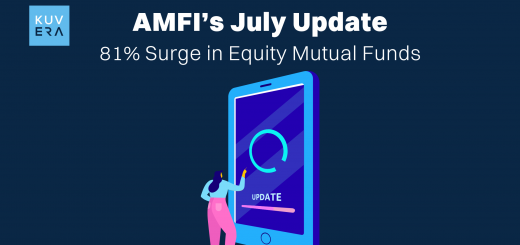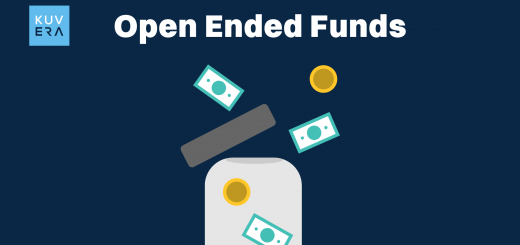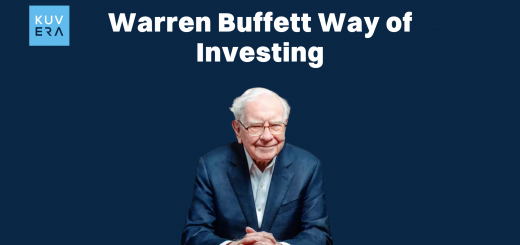Have you ever noticed this?
Certain stocks or sectors seem to consistently outperform the market for a while.
It is as if they have a strong tailwind pushing them forward. This phenomenon is at the heart of momentum investing.
It is a strategy seeking to capitalise on these persistent trends.
But what exactly are Momentum funds?
Why might they deserve a place in your investment portfolio?
Let us look deeply into this potentially rewarding investment avenue called momentum investing.
Decoding Momentum Investing
Have you ever looked at an aeroplane taking off? Yes, it goes up and up and above the clouds!
At its core, momentum in the financial markets can refer to the tendency of assets that have performed well in the recent past to continue performing well in the near future. This can apply vice versa for underperforming assets. This is not about betting on a sudden surge or a fleeting hype. Instead, momentum investing can be identified through established trends and aim to ride those waves as long as they persist.
You can think of it like surfing. You spot a good wave that has already gathered strength, and you paddle to catch it. You are hoping to enjoy the ride until it crests and it begins to lose its power.
This concept is rooted in behavioral finance. Momentum investing as a concept suggests that investors are not always perfectly rational. Psychological biases, such as herding behavior and the Fear Of Missing Out (FOMO), can contribute to the continuation of price trends. As more investors jump on the bandwagon of a rising asset, it can further fuel its upward trajectory.
What exactly are Momentum Funds?
Momentum funds are a type of mutual fund or Exchange Traded Fund (ETF) that employs a momentum investing strategy. These funds do not simply buy and hold a static portfolio. Instead, their investment approach involves actively identifying securities that have shown strong price appreciation over a specific period (typically three to twelve months) and investing in them. Conversely, they may reduce or eliminate holdings in assets that have exhibited weak or negative price performance.
The specific methodology for identifying and selecting momentum stocks can vary among different funds. Some funds may focus on relative strength, comparing the performance of one stock against another or against a market index. Others might look at absolute price changes over a defined period. Regardless of the specific approach, the underlying goal remains the same: to capture and benefit from the persistence of price trends.
How Momentum Funds Operate?
Unlike passive index funds that track a specific benchmark, momentum funds require active management. The fund manager and their team continuously monitor the market, analyse historical price movements, and make adjustments to the portfolio based on their momentum criteria. This dynamic approach means that the holdings of a momentum fund can change relatively frequently as different stocks or sectors gain or lose momentum.
Let us imagine a scenario where the technology sector has been on a strong upward trend for the past six months. A momentum fund might increase its allocation to technology stocks that have shown the most significant gains during this period. However, if the technology sector starts to falter and the energy sector begins to outperform, the fund would likely rebalance its portfolio, reducing its technology holdings and increasing its exposure to energy stocks.
Why Should You Consider Investing in Momentum Funds?
There are several reasons why you might consider adding momentum funds to your investment strategy. Let us look at the popular ones:
1. Potential for Outperformance
The primary appeal of momentum investing lies in its potential to deliver returns that outperform the broader market. These funds aim to capture periods of significant price appreciation by focusing on assets with strong upward trends. Numerous academic studies and real-world examples have demonstrated the historical effectiveness of the momentum factor in generating alpha (i.e. returns above the benchmark).
2. Diversification Benefits
While momentum funds might concentrate their holdings in specific sectors or asset classes that exhibit strong momentum, their dynamic nature can also contribute to diversification over time. As different areas of the market come into favor, the fund’s portfolio will adapt, potentially exposing you to a wider range of investment opportunities than a static portfolio might offer.
3. A Disciplined Approach
Momentum investing provides a disciplined and systematic approach to investing. It removes emotional biases that can often lead investors to make poor decisions, such as holding onto losing stocks for too long or selling winning stocks prematurely. Momentum funds aim to make more rational investment choices by following a data-driven strategy based on price trends.
4. Access to Expertise
Investing in a momentum fund can allow you to benefit from the expertise of professional fund managers. These managers have the resources and knowledge to identify and analyse momentum trends effectively. They conduct the necessary research and make the portfolio adjustments, saving you the time and effort of doing it yourself.
5. Participation in Emerging Trends
Momentum funds can provide a way to participate in emerging market trends and capitalise on the growth of promising companies or sectors. You could potentially benefit from significant gains as these trends continue by identifying and investing in these areas early in their upward trajectory.
Considerations and Potential Drawbacks to Momentum Investing
The potential benefits of momentum funds are attractive. It is crucial to be aware of the associated considerations and potential drawbacks. Let us learn more about them:
1. Market Volatility
Momentum strategies can be susceptible to market volatility. When market sentiment shifts rapidly, previously high-flying stocks can quickly lose momentum, leading to potential losses for Momentum funds.
2. Potential for Higher Turnover
The active trading involved in Momentum investing can result in higher portfolio turnover compared to passive strategies. This can lead to higher transaction costs within the fund, which can ultimately impact investor returns.
3. Risk of Whiplash
“Whiplash” refers to situations where a trend reverses sharply and unexpectedly. Momentum investors can be caught on the wrong side of such reversals, potentially leading to significant losses if they are heavily invested in assets that suddenly lose favour.
4. Not Always In Sync with Fundamental Value
Momentum is often driven by market sentiment and technical factors rather than underlying fundamental value. This means that Momentum stocks can sometimes become overvalued, increasing the risk of a correction.
5. Tracking Error
Momentum funds are actively managed mutual funds. Therefore will likely deviate from the performance of broad market indices. This deviation, known as tracking error, can be positive or negative.
Integrating Momentum Funds into Your Portfolio
If you are considering investing in Momentum funds, it is essential to approach it strategically. Let us look at the main strategies that might help:
1. Determine Your Risk Appetite
Momentum investing can be more volatile than broad market investing. You can assess your risk tolerance to ensure that you are comfortable with the potential for fluctuations in the value of your investment.
2. Consider Your Investment Horizon
Momentum strategies tend to work best over intermediate to long-term periods. You should be prepared to stay invested through potential periods of underperformance.
3. Diversify Your Overall Portfolio
You should not put all your eggs in one basket. Momentum funds should be considered as part of a well-diversified portfolio that includes other asset classes and investment strategies.
4. Research Different Momentum Funds
Not all momentum funds are created equal. You can carefully research the fund’s investment strategy, track record, expense ratio, and the experience of the fund manager before investing. Investors can look into the methodologies used to identify momentum and ensure they align with your investment philosophy.
5. Understand the Fund’s Holdings
You need to familiarise yourself with the types of securities the momentum fund typically invests in. This can give you a better understanding of the potential risks and rewards associated with the fund.
6. Regularly Review Your Investment
You can monitor the performance of your momentum fund and ensure it continues to align with your investment goals and risk tolerance. You can be prepared to make adjustments to your portfolio if necessary.
Identifying Top Mutual Funds Employing Momentum Strategies
When exploring momentum funds, you might encounter various options in the market. Identifying the top mutual funds that effectively implement a momentum investing strategy requires careful research and due diligence. You can consider factors such as the following:
- Consistent Application of Momentum Principles: Does the fund adhere to a clearly defined and consistently applied momentum strategy?
- Strong Historical Performance: While past performance is not indicative of future results, a fund with a solid long-term track record of capturing momentum trends is worth considering.
- Experienced Management Team: A skilled and experienced fund management team is crucial for navigating the complexities of momentum investing.
- Reasonable Expense Ratio: You can keep an eye on the fund’s expense ratio, as higher costs can erode your returns.
- Investment Mandate and Flexibility: It is important to understand the fund’s investment mandate and its ability to adapt to changing market conditions.
Resources like financial news websites, fund rating agencies, and your financial advisor can provide valuable insights into identifying potential top mutual funds that align with your investment objectives.
The effectiveness of momentum investing has been observed across various asset classes and time periods. As long as behavioral biases and market inefficiencies persist, the momentum factor is likely to remain a relevant and potentially rewarding investment strategy. However, it is essential to remember that no investment strategy guarantees success, and Momentum funds are no exception.
Wrapping Up
Momentum funds can offer a compelling way to potentially enhance your portfolio returns by capitalising on persistent price trends. You can understand the mechanics of these funds, and the associated considerations, you can make informed decisions about whether they align with your investment goals and risk appetite. All you need to remember is to conduct thorough research, diversify your holdings, and approach this dynamic investment strategy with a long-term perspective. Just like a surfer needs skill and awareness to ride a wave successfully, investors in momentum funds need knowledge and a disciplined approach to potentially benefit from the market’s ongoing trends.
Interested in how we think about the markets?
Read more: Zen And The Art Of Investing
Watch here: Learn about the F&O craze in India












